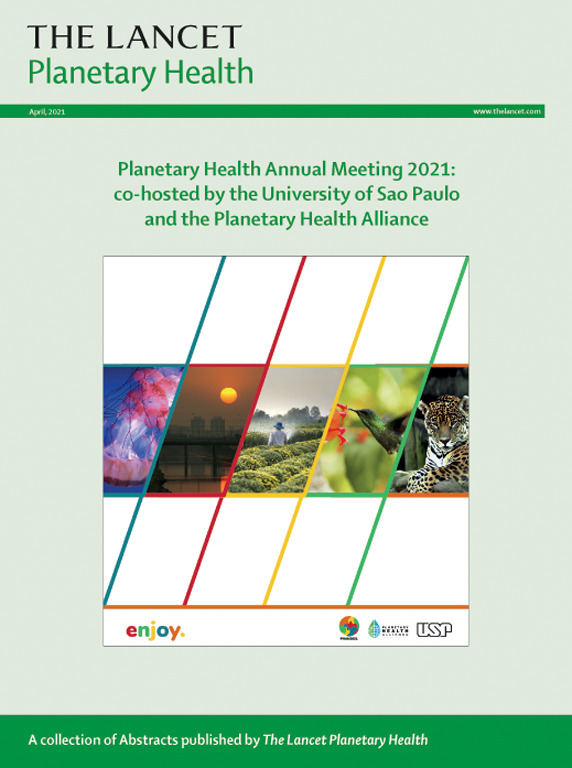Severe flooding and cause-specific hospitalisation among older adults in the USA: a retrospective matched cohort analysis
IF 21.6
1区 医学
Q1 ENVIRONMENTAL SCIENCES
引用次数: 0
Abstract
Background
Floods are the most common climate-related disaster; yet previous studies have investigated the impact of floods on only a few health outcomes in narrow spatiotemporal settings. We aimed to assess the association between severe flood exposure and cause-specific hospitalisation rates in adults older than 65 years in the contiguous USA.
Methods
In this retrospective matched cohort analysis, we obtained inpatient claims data from Medicare fee-for-service beneficiaries older than 65 years living in the contiguous USA from Jan 1, 2000, to Dec 31, 2016. From each inpatient hospitalisation record, we extracted the admission date, primary International Classification of Diseases, 9th revision, clinical modification (ICD-9-CM) code (or 10th revision [ICD-10-CM] code on or after Oct 1, 2015), and self-reported residential ZIP code. Hospitalisation data were linked with satellite-based, high-resolution historical flood maps from the Global Flood Database by ZIP code. Days during and shortly after a flood exposure were matched to non-flood-affected control days by ZIP code and day-of-year. We estimated relative percentage changes in hospitalisation rates for 13 mutually exclusive, well-defined disease categories during and in the 4 weeks following flood exposure with conditional quasi-Poisson regression models.
Findings
This study captured 72 major flood events and included over 4·5 million hospitalisations occurring over a 17-year period. We observed elevated rates of hospitalisation on average during and following flood exposure for skin diseases (3·1% [95% CI 1·4 to 4·9]), nervous system diseases (2·5% [1·0 to 4·1]), musculoskeletal system diseases (1·3% [0·3 to 2·3]), and injuries or poisoning (1·1% [0·2 to 2·0]). Communities with lower proportions of Black residents experienced exacerbated flood effects for nervous system diseases (7·6% [95% CI 2·8 to 12·6]), whereas skin diseases (6·1% [1·9 to 10·5]) and mental health-related impacts (3·0% [–0·3 to 6·5]) were more pronounced for areas with larger percentages of Black residents during flood exposure.
Interpretation
Among adults older than 65 years, exposure to severe flood events was associated with increased hospitalisation rates for skin diseases, nervous system diseases, musculoskeletal system diseases, and injuries. Different patterns of hospital admission persisted for populations with higher versus lower proportions of Black residents. Our findings indicate a need for targeted flood-specific preparedness and adaptation strategies for socially vulnerable populations, including older individuals and racially minoritised communities.
Funding
National Institutes of Health, Harvard Data Science Initiative, and Alfred P Sloan Foundation.
美国老年人的严重洪水和原因特异性住院:一项回顾性匹配队列分析。
背景:洪水是最常见的气候相关灾害;然而,以前的研究仅在狭窄的时空背景下调查了洪水对少数健康结果的影响。我们的目的是评估严重洪水暴露与美国65岁以上老年人病因特异性住院率之间的关系。方法:在这项回顾性匹配队列分析中,我们获得了2000年1月1日至2016年12月31日期间居住在美国连续地区的65岁以上的医疗保险按服务收费受益人的住院索赔数据。从每个住院患者的住院记录中,我们提取了入院日期、主要国际疾病分类第9版、临床修改(ICD-9-CM)代码(或2015年10月1日或之后的第10版[ICD-10-CM]代码)和自报告的居住邮政编码。住院数据按邮政编码与全球洪水数据库中基于卫星的高分辨率历史洪水地图相关联。根据邮政编码和年份,洪水发生期间和之后不久的天数与未受洪水影响的控制天数相匹配。我们用条件准泊松回归模型估计了13种相互排斥的、明确定义的疾病类别在洪水暴露期间和之后4周内住院率的相对百分比变化。研究结果:该研究记录了17年期间发生的72次主要洪水事件,包括超过450万人住院治疗。我们观察到,在洪水暴露期间和之后,因皮肤病(3.1% [95% CI 1.4至4.9])、神经系统疾病(2.5%[1.0至4.1])、肌肉骨骼系统疾病(1.3%[0.3至2.3])和伤害或中毒(1.1%[0.2至2.0])而住院的平均比率上升。在黑人居民比例较低的社区,洪水对神经系统疾病的影响加剧(7.6% [95% CI 2.8至12.6]),而在黑人居民比例较高的地区,皮肤疾病(6.1%[1.9至10.5])和精神健康相关影响(3.0%[- 0.3至6.5])更为明显。解释:在65岁以上的成年人中,暴露于严重的洪水事件与皮肤疾病、神经系统疾病、肌肉骨骼系统疾病和损伤的住院率增加有关。在黑人居民比例较高和较低的人群中,不同的住院模式持续存在。我们的研究结果表明,需要针对社会弱势群体(包括老年人和少数族裔社区)制定有针对性的洪水准备和适应策略。资助:美国国立卫生研究院、哈佛数据科学倡议和阿尔弗雷德·P·斯隆基金会。
本文章由计算机程序翻译,如有差异,请以英文原文为准。
求助全文
约1分钟内获得全文
求助全文
来源期刊

Lancet Planetary Health
Multiple-
CiteScore
28.40
自引率
2.30%
发文量
272
审稿时长
8 weeks
期刊介绍:
The Lancet Planetary Health is a gold Open Access journal dedicated to investigating and addressing the multifaceted determinants of healthy human civilizations and their impact on natural systems. Positioned as a key player in sustainable development, the journal covers a broad, interdisciplinary scope, encompassing areas such as poverty, nutrition, gender equity, water and sanitation, energy, economic growth, industrialization, inequality, urbanization, human consumption and production, climate change, ocean health, land use, peace, and justice.
With a commitment to publishing high-quality research, comment, and correspondence, it aims to be the leading journal for sustainable development in the face of unprecedented dangers and threats.
 求助内容:
求助内容: 应助结果提醒方式:
应助结果提醒方式:


